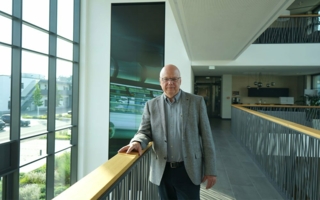22/04/2021 – Special: Africa — auf Deutsch lesen
Ethiopia – A great opportunity for Germany’s textile industry
Despite its many challenges, Ethiopia offers a wealth of opportunity. An article by Prof. Dr.-Ing. Markus Michael and Franziska Lehmann, Texulting.
Countries around the world are fiercely competing for a slice of Africa’s markets, resources, and opportunities. Given that other nations have already gained an advantage over Germany, the time has come to build the continent’s textile industry with German help.
Indeed, Africa has increasingly become the focus of the international community in recent years. Strengthened by democratic governments and a generation of young, motivated people, Africa is a future market and location for European companies which are having to assert themselves in an ever more volatile and global marketplace. Growth in Africa must be driven by the development of a textile industry.
History has taught us that the economic and social evolution of first-world countries was significantly bolstered by the simultaneous rise of a textile industry. Indeed, the textile industry has made important contributions in areas such as standardisation, automation, and technical development. Building on the simple products and machine technology of the early days, the industry has since matured into an engine of innovation and an important pillar of the industrialised world. These foundations, enriched by the experiences of recent decades, must now be transferred to the African continent. Partnerships need to be formed that focus, above all, on the areas of education and training, but also on enhancing the appeal for foreign investors. To achieve these ambitious goals, the UN and the German and Ethiopian governments have initiated and already implemented numerous projects. The development of the textile sector is thus a central component of the Ethiopian government’s new 10-year plan (10/2020). At the same time, the German Federal Government is sponsoring bilateral projects as part of the Special Initiative on Africa and international development cooperation (cf. the Federal Government’s Textile Action Plan 2018).
Ethiopia has a population of approximately 118 million inhabitants, 80 per cent of whom are under 30 years of age. If a burgeoning textile industry and strong value creation are to become a reality, it is important to draw on this reservoir of young, motivated people in the years ahead.
Indeed, the people of Ethiopia are currently finding employment mainly in the garment industry, with mostly young women and girls making up the fashion and clothing of large international corporations. The manufacturing companies are often owned by Asian firms, incentivised to set up in Ethiopia by low wages for unskilled labour along with minimal energy costs.
The competition for the cheapest extended workbench between Africa and Southeast Asia is leading to a downward spiral to the detriment of the workers. This can only be stopped by promoting further development in the textile sector.
Ethiopia already has a functioning network that enables academic training at an international level. Such projects are cemented in numerous agreements, which in Germany are sponsored by the German Academic Exchange Service (DAAD). However, the academics trained in this way are currently finding it difficult to secure employment with companies in Ethiopia, as the positions corresponding to their academic training (middle management) either simply do not exist or are filled by imported foreign experts. The result is a steady brain drain of well-trained skilled workers to Western Europe which, in turn, delays the further development of Ethiopia’s textile sector. The establishment of skilled worker training is urgently needed to counteract this trend. Ethiopia’s textile industry is currently organised horizontally and is largely dependent on the manufacture of semi-finished products imported from abroad and on making up garments destined for foreign climes.
As a result, Ethiopia imports more than five times its exports. This fundamental imbalance contributes significantly to the critically low level of foreign exchange reserves. Given the dependence of Ethiopia’s manufacturing sector on imports, the lack of foreign exchange reserves acts as an impediment to growth.
The verticality of the textile sector, therefore, needs to be improved as one of many efforts. This will require development and investment along the entire textile chain from the raw material to the end product. The Ethiopian government is currently concentrating on expanding cotton production. However, experience has shown in recent years that these water-intensive processes can only be expanded to a limited extent. At the same time, cotton producers are also struggling with persisting quality problems fuelled by the lack of skilled workers. This issue must be addressed through the training of skilled workers and diversification into the field of synthetic fibres.
In addition, solutions must be found that enable any textile waste produced there to be recycled and processed into further textile products. This would reduce the need for imports and create value in the country.
It is quite clear that focused bilateral projects are needed to seize the great opportunities offered by the African continent in general and Ethiopia in particular. Such initiatives must be designed around mutual need and implemented in collaboration with relevant partners. Using role-model concepts (e.g., the textile sector), these measures must be developed and introduced in a disciplined manner. This means that, starting with well-designed further education and training projects, accompanying collaborative projects and business start-up programmes must be initiated. This will allow the trained workers to be directly integrated into the value chain and deployed in line with their qualifications. In a second phase, these industrial policy measures must be evaluated in terms of sustainability and resource efficiency. In the best-case scenario, concepts should be implemented that address both goals at the same time.
You will find the full report by Prof. Dr.-Ing. Markus Michael and Franziska Lehmann, Texulting GmbH, in our current print edition 2/2021 in German language. To subscribe click here.




